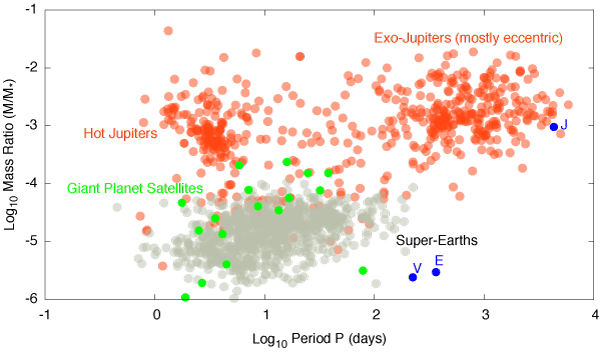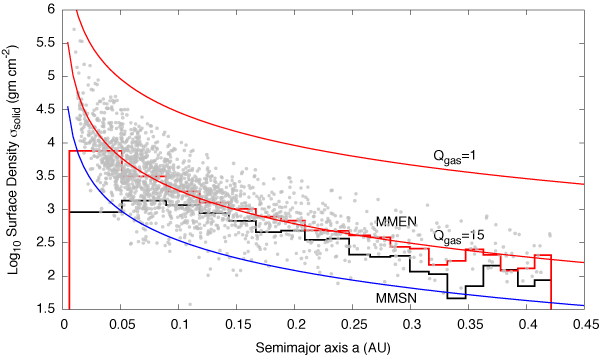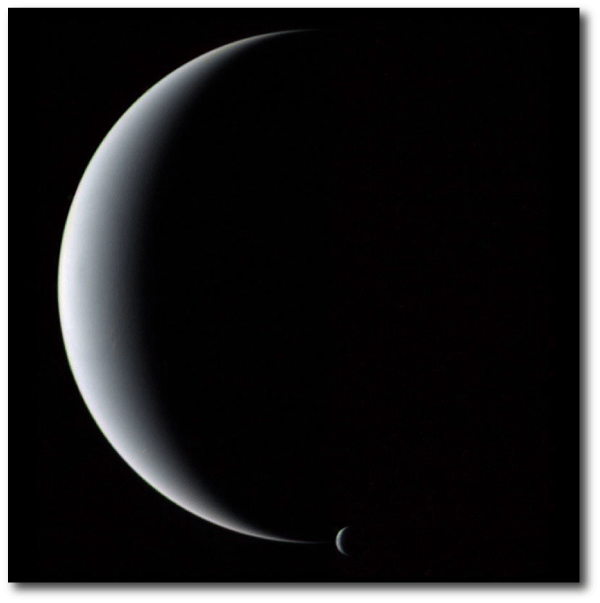Galileo’s unveiling of Io, Europa, Ganymede and Callisto is unarguably shortlisted for the most important astronomical discovery of all time. The Galilean satellites constitute a planetary system in miniature, and their clockwork presence is a centerpiece of Newton’s De mundi systemate.
And indeed, if one bases one’s expectations for exoplanetary systems on the Jovian satellites (as well as the regular satellite systems of Saturn and Uranus) then the startling abundance of compact systems discovered by the Geneva Team and by Kepler are hardly startling at all. The Galaxy’s default planetary system — as expressed around many, if not most of its stars — has a handful of planets on near-circular orbits, with periods ranging from days to weeks, and masses of order one part in ten thousand of the central star. Out here in the sticks, near the Sun, we’ve got an Earth, yes, but unlike most stars, we have no super Earths.
There is an intriguing, seemingly anti-Copernican disconnect between the solar system and the extrasolar planets. Much of the theoretical framework of planet formation is based on the paradigm provided by the Minimum Mass Solar Nebula (MMSN), the $\sigma \propto r^{-1.5}$ disk of net solar composition that is required to account for the solar system’s planets. In the standard formulation, the MMSN holds its power-law form inward to about 0.5 AU, where it meets a murkily indistinct inner boundary that’s needed to account for the lack of anything interior to Mercury’s orbit.
Interestingly, the MMSN fades out just where the super-Earths really start to appear. This has led to the widespread assumption that planets somehow form at large radii and then migrate long distances in order to be found in their observed orbits. That seems rather odd.
Eugene Chiang and I have been exploring an alternative idea — namely that the solar system doesn’t present a good starting template for studying extrasolar planets, and that planets, in general, don’t migrate very far (if at all). Could it be that the huge population of super-Earths formed right where they are observed? If that’s the case, it makes life simpler, and it implies that the template we’re after is the Minimum Mass Extrasolar Nebula (MMEN), which can be defined by grinding up the planets that have been observed by Kepler, and which is not all that different from what one gets if one simply takes the MMSN and runs it all the way into the dust sublimation boundary at ~0.05 AU.
Our paper is available at arXiv.




